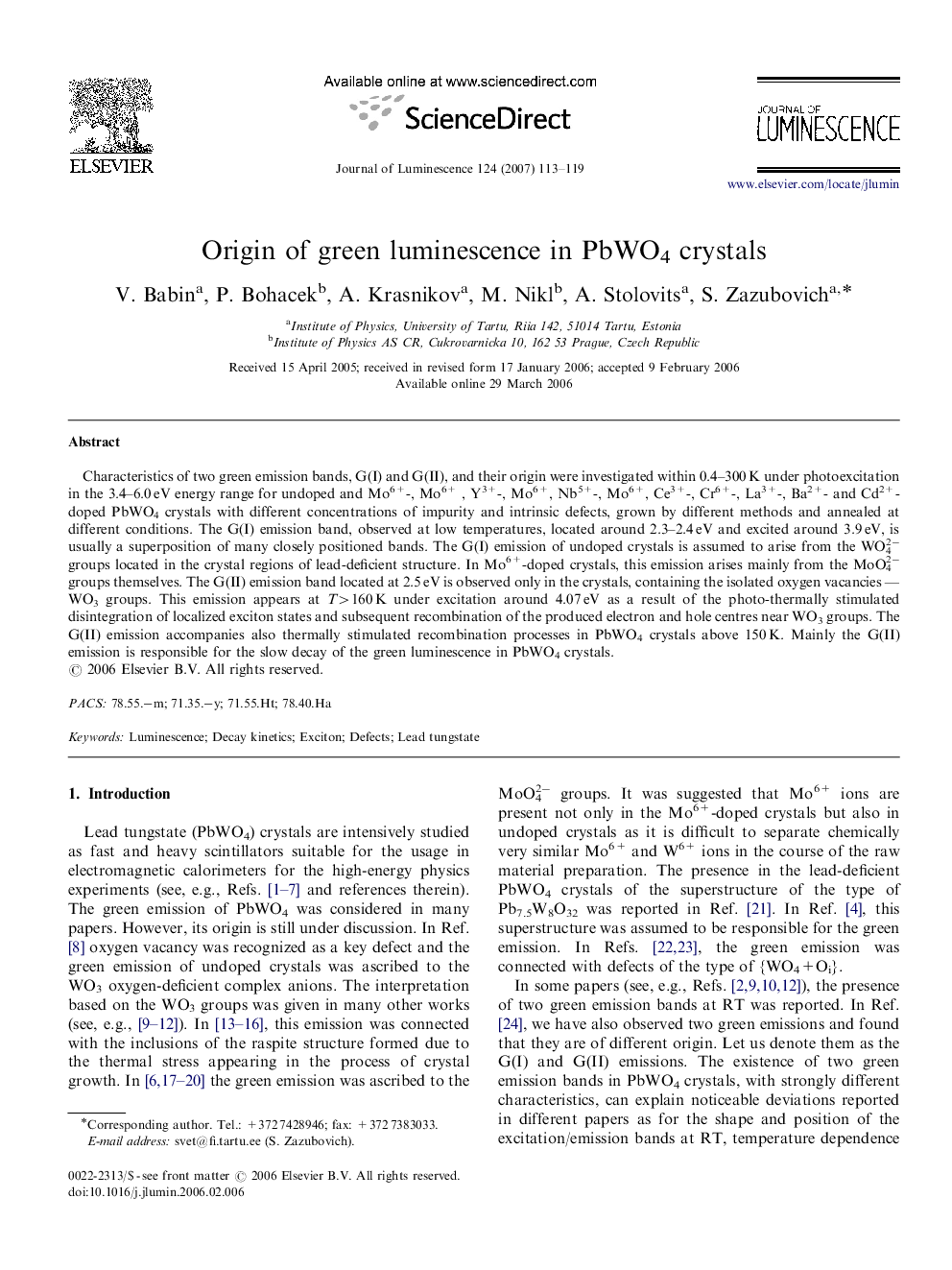| Article ID | Journal | Published Year | Pages | File Type |
|---|---|---|---|---|
| 5403649 | Journal of Luminescence | 2007 | 7 Pages |
Abstract
Characteristics of two green emission bands, G(I) and G(II), and their origin were investigated within 0.4-300Â K under photoexcitation in the 3.4-6.0Â eV energy range for undoped and Mo6+-, Mo6+ , Y3+-, Mo6+, Nb5+-, Mo6+, Ce3+-, Cr6+-, La3+-, Ba2+- and Cd2+-doped PbWO4 crystals with different concentrations of impurity and intrinsic defects, grown by different methods and annealed at different conditions. The G(I) emission band, observed at low temperatures, located around 2.3-2.4Â eV and excited around 3.9Â eV, is usually a superposition of many closely positioned bands. The G(I) emission of undoped crystals is assumed to arise from the WO42â groups located in the crystal regions of lead-deficient structure. In Mo6+-doped crystals, this emission arises mainly from the MoO42â groups themselves. The G(II) emission band located at 2.5Â eV is observed only in the crystals, containing the isolated oxygen vacancies - WO3 groups. This emission appears at T>160Â K under excitation around 4.07Â eV as a result of the photo-thermally stimulated disintegration of localized exciton states and subsequent recombination of the produced electron and hole centres near WO3 groups. The G(II) emission accompanies also thermally stimulated recombination processes in PbWO4 crystals above 150Â K. Mainly the G(II) emission is responsible for the slow decay of the green luminescence in PbWO4 crystals.
Related Topics
Physical Sciences and Engineering
Chemistry
Physical and Theoretical Chemistry
Authors
V. Babin, P. Bohacek, A. Krasnikov, M. Nikl, A. Stolovits, S. Zazubovich,
